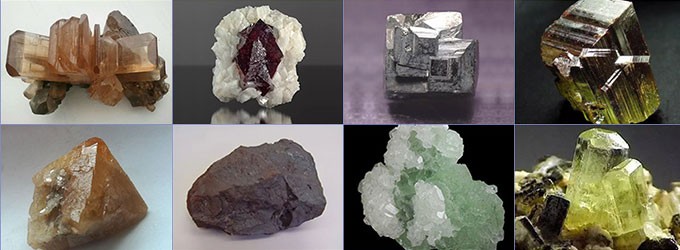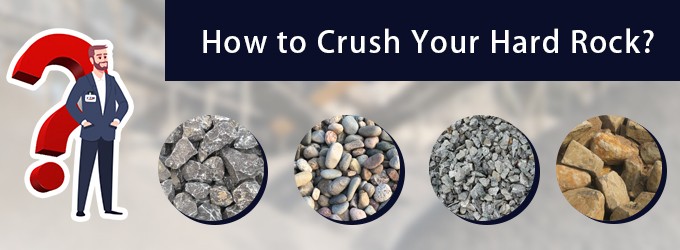Asbestos has a risk of cancer, especially related to lung cancer and mesothelioma. At least 107,000 people died of asbestos exposure every year. 66 countries including Japan, South Korea, and Canada have banned asbestos. However, some countries still use it. Why is the deadly asbestos industry still alive and well?
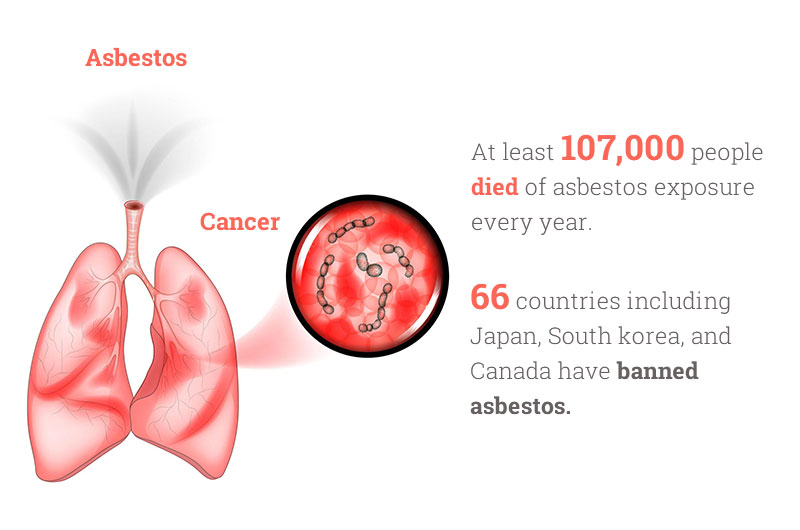
What is asbestos?
Asbestos is a general term for a class of silicate minerals that can be stripped into long and thin fibers. It refers to certain types of chrysotile and amphibole.
Asbestos is the only natural mineral fibre. Asbestos fiber is very thin, smooth, elastic, and resistant to fire, with a diameter of less than 0.003 mm. These properties make asbesto useful, but also expose its toxicity.
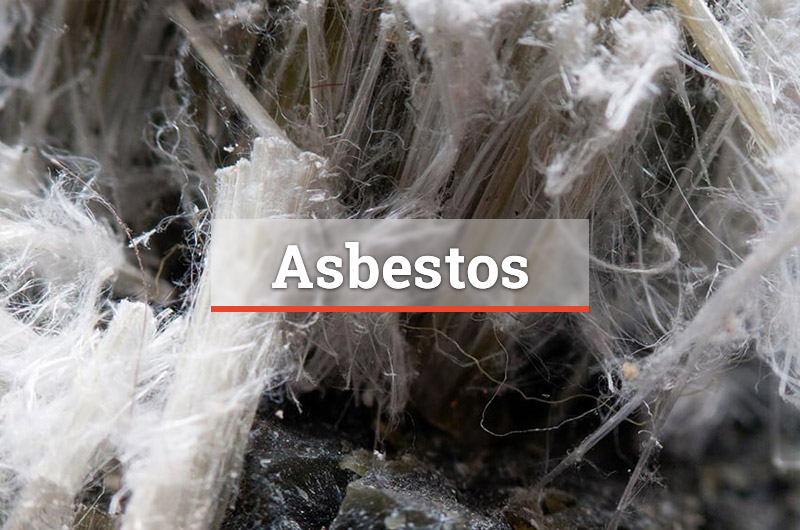
Asbestos has been used by humans for over 4,500 years. The earliest record was that it was used as a shroud for the Egyptian mummies. Then it was used worldwide as a building material. In 1987, asbestos was recognized as a class of carcinogens.
What does asbestos look like?
EPA defines 6 mineral types as “asbestos” that fall into two categories: amphibole and serpentine.
Amphibole asbestos fibers have a straight, jagged shape, including amosite, crocidolite, tremolite, anthophyllite and actinolite. Serpentine asbestos fibers are curly and there is only one type of chrysotile.
Asbestos color
According to the asbestos color, types of asbestos are divided into white asbestos, brown asbestos and blue asbestos.
1. White asbestos (Chrysotile)

White asbestos is the most commonly used asbestos, accounting for 95% of asbestos in American buildings. The common uses were asbestos walls, asbestos sheeting, asbestos roof, asbestos siding, asbestos tile, asbestos pipe, etc.
2. Brown asbestos (Amosite)

Brown asbestos has a higher risk than white asbestos. It is found frequently as a fire retardant in thermal insulating boards, asbestos ceiling tiles and asbestos cement boards.
3. Blue asbestos(Crocidolite)

Blue asbestos is the most dangerous asbestos if disturbed. It was found primarily in southern Africa, Australia and Bolivia. The common uses are isolated steam engines, spray coatings, pipe insulation, cements, and artificial snow (used in Hollywood movies like The Wizard of Oz, department store windows and private homes).
Friable asbestos and non-friable asbestos
Identifying asbestos friability depends on how easily it can be broken down by hand.
1. Friable asbestos
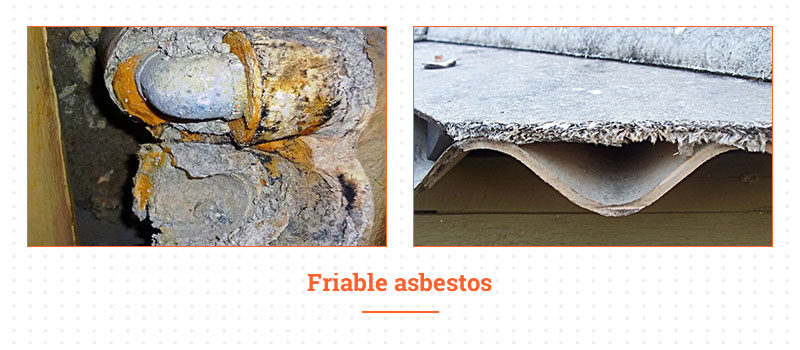
- Easy to crumble or break by hand;
- More dangerous than non friable asbestos, as asbestos fibers release is easy to release and spreads in the air for several days without being detected;
- Used for pipe insulation, thermal insulation, ceiling tiles, Gypsum, baby powder (talcum powder asbestos), etc.
2. Non friable asbestos
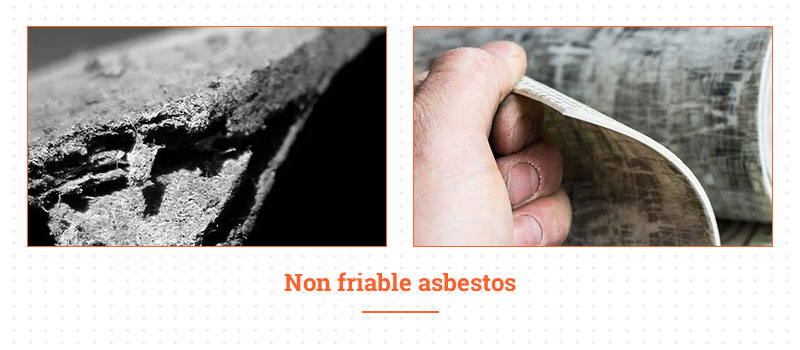
- Cannot crumble or break by hand, but may be disturbed by sawing, sanding or cutting;
- Less dangerous than friable asbestos if undisturbed or securely contained within other materials;
- Used for vinyl floor tiles, window glazing, asbestos cement boards, and asbestos tiles.
Asbestos exposure
Long-term exposure to asbestos can cause asbestos poisoning and asbestos cancer. Asbestos accumulates in the body with every exposure, and there is no way to reverse the damage.
Asbestos job is the No.1 cause of asbestos-related disease. Asbestos exposure also frequently occurs in the military and home.
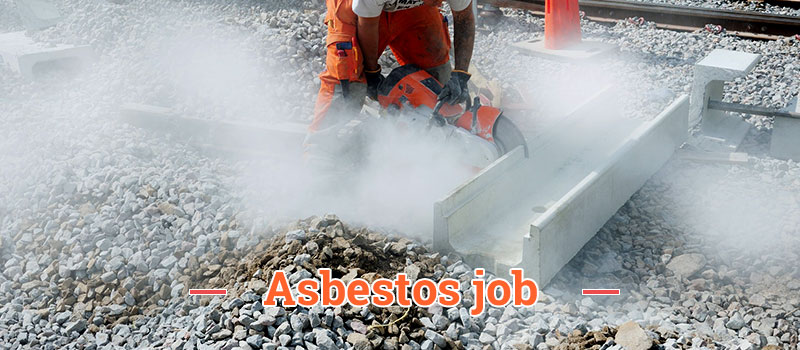
Asbestos job
Asbestos job refers to any job potentially exposing workers to asbestos fibers.
It involves:
- Asbestos miners
- Aircraft and auto mechanics
- Boiler operators
- Building construction workers
- Electricians
- Railroad workers
- Refinery and mill workers
- Shipyard workers
- Workers removing asbestos around steam pipes in older buildings
Many jobs require workers to sand, cut or repair asbestos products. It often creates asbestos dust. Asbestos buildings may face wear and tear over the years to expose fibers. Workers may bring fibers home on their clothing, causing secondhand exposure.
Therefore, we must care about the health of workers. Asbestos awareness training can provide them with knowledge on asbestos identification and work safely with it.
Asbestos exposure symptoms
Asbestos fibers are dangerous when they are inhaled and become embedded in organ linings and tissues. Its hazards incubation period can reach 15 years.
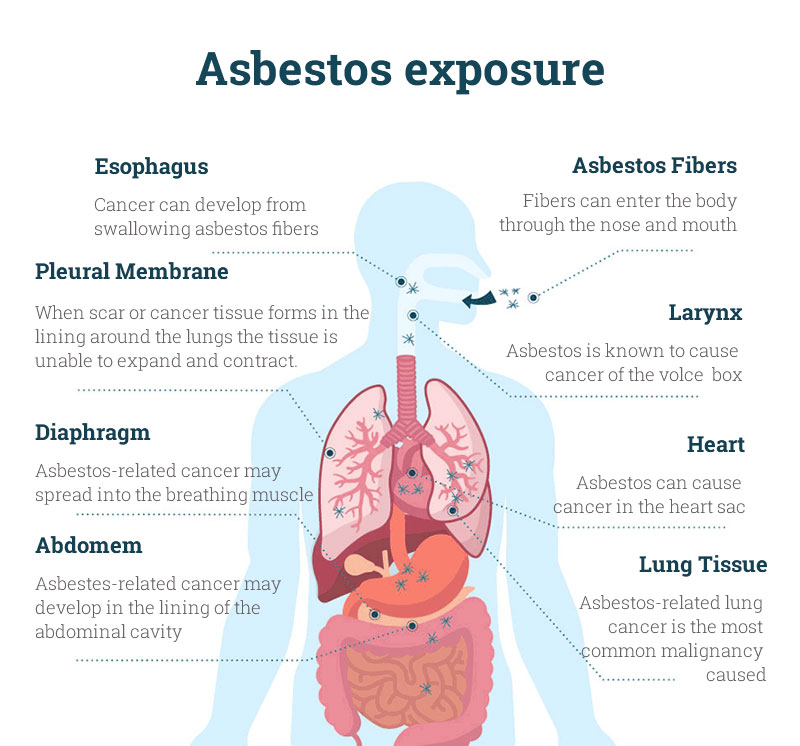
1. Asbestosis disease
What is asbestosis? It is a serious, chronic, non-cancerous respiratory disease. Asbestosis causes are that after asbestos exposure, fibers are inhaled and lodged in lungs, which aggravate lung tissues and cause tissues to scar. Asbestos amount, concentration and type all contribute to the asbestosis disease.
Asbestos symptoms include shortness of breath, persistent dry cough, loss of appetite with weight loss, chest tightness or pain, wider and rounder fingertips and toes than normal (clubbing).
Asbestosis jobs include firefighters, construction workers, industrial and power plant workers and shipyard workers.
There is no effective asbestosis treatment. Asbestosis disease is usually disabling or fatal. Workers can do the asbestos lawsuit and claim for asbestosis to ensure health rights.
2. Asbestos lung cancer
Asbestos lung cancer causes the largest number of deaths related to asbestos exposure. People who have the asbestos job are more likely to develop lung cancer than normal people. Asbestos reports found that workers who smoke and have asbestos in lungs are 90 times higher than those who neither smoke nor have been exposed to asbestos.
The common symptoms of lung cancer are coughing and a change in breathing. Other symptoms include shortness of breath, persistent chest pains, hoarseness, and anemia.
3. Mesothelioma
Mesothelioma is a rare form of cancer that most often occurs in the thin membrane lining of the lungs, chest, abdomen, and (rarely) heart. Every year 10,000 to 15,000 people worldwide are diagnosed with mesothelioma. The onset period is 30-40 years after asbestos exposure.
The symptoms of mesothelioma are severe pain, difficulty breathing, weight loss, and fatigue. 95% of patients will occur pleural effusion.
4. Skin hazards
Workers often have contact dermatitis, but some workers can gradually tolerate it, which is called "hardening phenomenon". The degree of damage to the skin varies with fiber diameter and surface roughness. When the fiber diameter exceeds 5μm, it has obvious stimulating effect.
5. Eye and mucous membrane hazards
Workers can suffer from conjunctivitis and keratitis. In severe cases, corneal opacity and local abscess can be seen. Fibers with a diameter of 3μm or less can be flushed out from the patient' s eyes.
6. Other Cancers
Asbestos survey suggests that cancers in the esophagus, larynx, oral cavity, stomach, colon, kidney, and ovaries may be caused by ingesting asbestos.
How to avoid asbestos exposure in life?
• Safe Alternative to Asbestos
The best way to avoid asbestos exposure is to use asbestos substitutes. America has reduced asbestos use and relied on safe substitutes, such as polyurethane foam,amorphous silica fabric,cellulose fiber,and thermoset plastic flour.
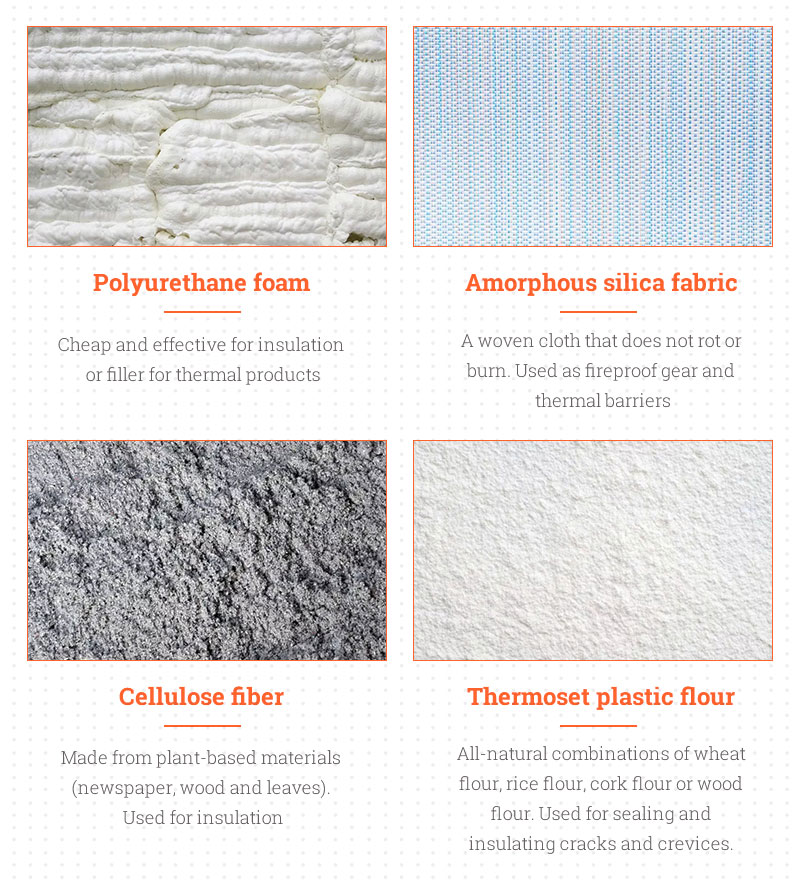
• Handling the asbestos in houses and buildings.
For old asbestos buildings, you should invite asbestos abatement professionals to do asbestos testing, repair or asbestos removal. The asbestos removal cost is 200-3000 dollars. For asbestos disposal, the materials should be taken to the relevant landfill.
• Do a good job of protection.
When doing asbestos work, wear protective clothing and masks, take a bath and change clothes after leaving the workplace, and then come in contact with others.
• Diligent dust removal.
Whether in living environment or working environment, dust should be removed regularly to reduce the time and frequency of asbestos exposure.
• Stay away from construction waste.
Do not stay for a long time at asbestos construction sites or sales points. Wear protective masks when necessary to reduce the inhalation of dangerous asbestos dust.
Why the deadly asbestos industry is still alive and well?
Asbestos has three characteristics that make many industries inseparable from it. That is, strong, fireproof, and cheap.
The first advantage is asbestos insulation and high strength. Second, it has been an excellent fire prevention material since ancient times. Third, the global mining of asbestos makes its price very low. Many industries, especially the construction industry, use it as the main material.
Although 66 countries completely banned asbestos production and use, other regions in the world are still producing and exporting asbestos. In Australia where asbestos was banned, there are countless incidents of asbestos being found in the materials of new houses every year, which is difficult to monitor.
Russia was the largest asbestos producer with 53% of the world total, followed by Kazakhstan, China, and Brazil. In 2020. Russia produced 790,000 tons. Asia consumes 70% of asbestos in the world. China, India and Indonesia are the largest consumers.

Conclusion
Every coin has two sides. Although asbestos is an important industrial material, it is deadly and can threaten human health. Since it cannot be completely banned, we can reduce asbestos use, do asbestos removal and use safer substitutes.
References
1.Asbestos


